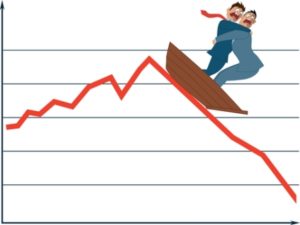 All investments carry a risk that investors may not get back all or part of the money invested. Some investments are, however, considered inherently more risky and more volatile than others. Traditionally, investments in bonds issued by governments in developed and politically-stable economies may have been considered lower risk – whereas; investments in emerging markets or particular industry sectors, (e.g. exploration & mining) might have been considered higher or speculative risk. The value of any investment is in general terms determined by what investors are prepared to pay for it at the time it is marketed and/or the ability of the provider of any capital protection to meet its liabilities. It should be recognised that the capacity of any government or financial institution to meet its liabilities can and does change over time.
All investments carry a risk that investors may not get back all or part of the money invested. Some investments are, however, considered inherently more risky and more volatile than others. Traditionally, investments in bonds issued by governments in developed and politically-stable economies may have been considered lower risk – whereas; investments in emerging markets or particular industry sectors, (e.g. exploration & mining) might have been considered higher or speculative risk. The value of any investment is in general terms determined by what investors are prepared to pay for it at the time it is marketed and/or the ability of the provider of any capital protection to meet its liabilities. It should be recognised that the capacity of any government or financial institution to meet its liabilities can and does change over time.
Investments may fall as well as rise in value – in some cases there may be significantly marked increases and decreases in investment values over time. Some investments are more volatile than others and the general expectation is that, in the long run, more risky investments have the potential to achieve higher returns than less volatile investments – but this general assumption cannot be guaranteed and should not be knowingly misconstrued.
Risk is a nefarious notion. It is open to wild interpretation and, in truth, is not very well understood. When the potential trade-off between risk and return is introduced the topic becomes very complicated indeed. Many professional advisers (including MMPI) use risk assessment questionnaires to elicit answers that provide a measure of an investor’s attitude to risk. MMPI acknowledges that this is not a perfect method for assessing an individual’s risk appetite and cannot be relied upon exclusively to determine the basis of financial decisions. Nevertheless, in our experience the measure is a very useful foundation for discussions that ultimately lead to financial determinations.
One shortcoming in the risk-evaluation approach is that the risk score may not adequately reflect the investor’s financial goals and desired outcomes. If, say, investors have a financial goal of reaching a certain target in their pension fund they are unlikely to achieve their goals at 0% interest rates. Implying, that they will need to invest much more money during their working life and/or seek significantly higher returns. Chasing higher returns typically means investing in products that carry higher risks. Many of these products may attract a risk score that is higher than the risk appetite identified by the risk assessment questionnaire – hence the risk versus return conundrum!
An excellent example of the dilemma presented itself in the recent AIB flotation. Some consumers scoring 2 or 3 on the 1-7 risk scale were caught up in the moment and bought the shares. Buying naked shares without downside protection scores 7 on the risk scale and is, therefore, not a good match. However, it might reasonably be argued that consumers were pursuing their financial goals and their desired outcomes. The risk/return conundrum is complex and not easily resolved. Semper caveat emptor!

